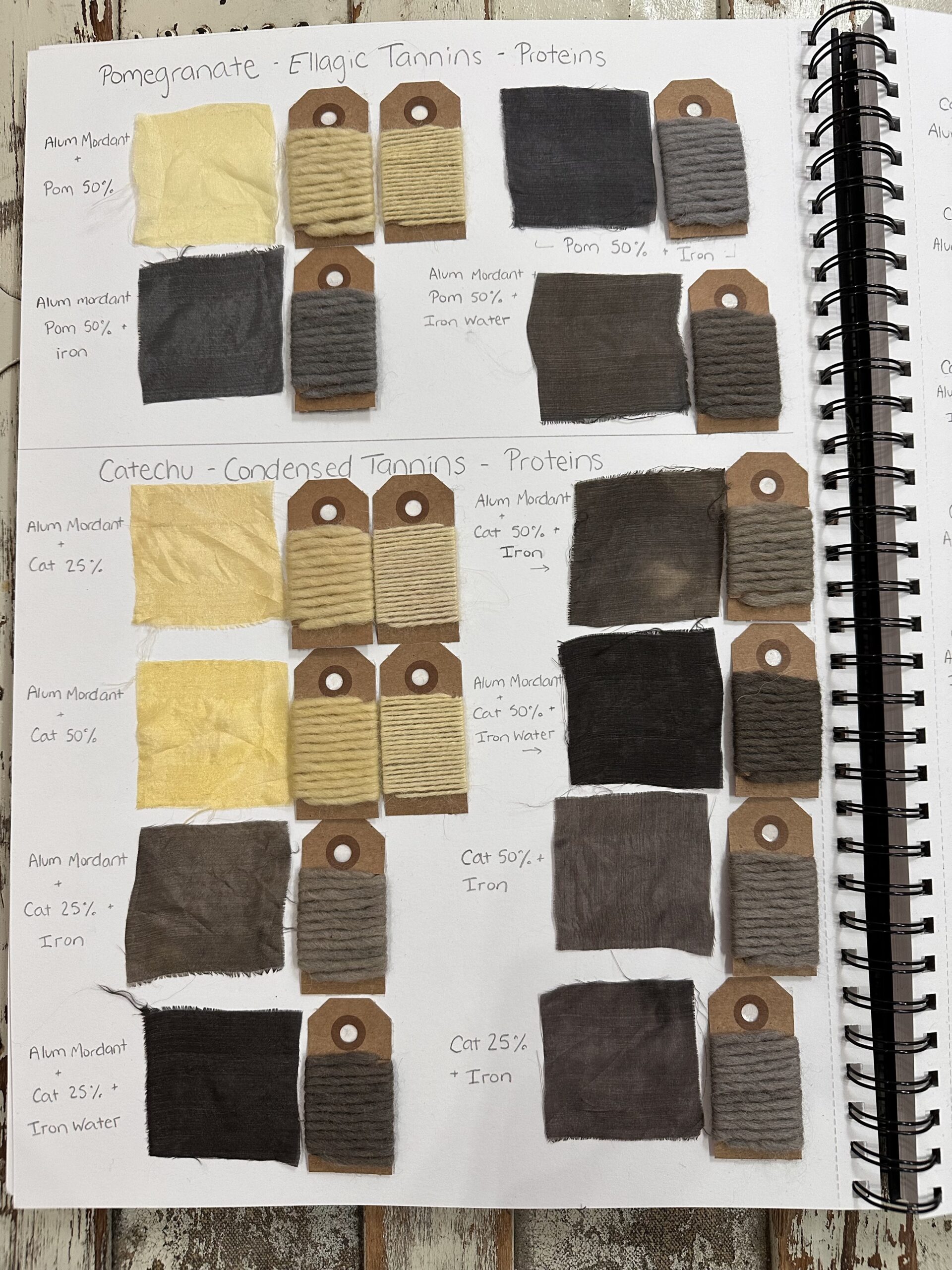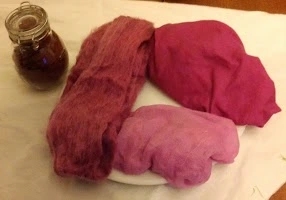If anyone ever tells you Pink is not a period colour – they lie. Pink is produced in a number of ways, not least of which is just allowing a red dyebath to exhaust into steadily more pale pink tones.
This is ordinary wool, linen and muslin cloth all dyed with brazilwood. I used tap water (hard, lots of lime) and was a bit sparing with the chips to water and weight of fibre ratio. My aim here wasn’t to try for a red, but just to take my default, to hand ingredients and see what colour came out.

Pink. Definitely pink. I like it though, especially the linen. I’ve read somewhere that easter eggs used to be coloured with brazilwood too, so I chucked an egg in the dyebath overnight to see what happens. I don’t think I’ll chance eating it after mind, it’s just a “FOR SCIENCE!” investigation. The stuff I’ve been reading about brazilwood promises wonderful ranges of colour from deep red to purple depending on the PH of the dyebath. I look forward to experimenting with this, I’ve loved experiments with PH on things like rhubarb root.
What it looks like

Period correctness
Brazilwood isn’t named because it came from Brazil, Brazil was named because there was an abundance of an expensive dye source suddenly available to them, a whole country of it. It is commonly thought that Brazilwood comes from South America and is therefore late period, but actually the wood came first. When I looked it up I was greeted with a photograph of what I consider one of the definitive South American trees, the Bird of Paradise Caesalpinia gilliesii. Brazilwood dye had been harvested from Caesalpinia punctata and introduced from India and Asia for a long time before the Portugese discovered the abundance of Cæsalpinia echinata. The New World abundance did bring a new abundance of rich red sources, of which brazilwood was a major contributor, so brazilwood and deep, excellent reds and crimsons are often considered late period.
The asian variety, the type I’m using, is also known as Sappanwood and is not endangered. The tropical brazilwood from South America is no longer available to buy easily, it is tightly controlled as the source is considered endangered. If you want to know a bit more about it I found this article interesting: https://www.lib.umn.edu/bell/tradeproducts/brazilwood
How to use it

So what I did. Soaked 40gms of brazilwood chips in boiling water overnight, then simmered them for an hour. There was a pink foam and lots of entertainment watching the chips swirl about in the simmering liquid. I’ve since read that the colour extraction definitely takes time with brazilwood, I probably should leave it simmering for longer to get a stronger end result. I strained it while it was still hot through muslin as those bits of wood are a curse to try to separate from any sort of fibre. I let it cool for a while then added my mordanted fibres, soaked for about 45 minutes. Patience would result again in stronger colours.
Things to be aware of
Water matters – Dye stuff in general can be highly sensitive to acid or alkaline conditions, it *DOES* make a difference. If you are not getting colours you are happy with from tap water try it with rain water.
Brazilwood chips can be dried and used again.
Changing the pH level of the dyebath will achieve more orangey colours on the acid side and blue-reds on the alkaline side. (vinegar and washing soda, for example.)
Do make sure to strain all the wood chips out before adding your fibre, or keep them in a dyebag of some sort while simmering and with fibres added.


Leave a Reply